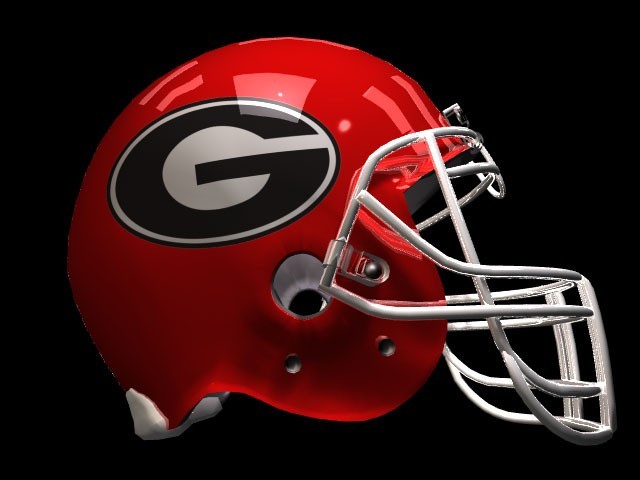ATHENS -- Former University of Georgia football coach and athletic director Vince Dooley has added one more entry to his list of accomplishments, along with winning 201 games, six SEC championships, a national football championship, and building one of the nation's best athletic programs.<br />
<br />
At the age of 82, Dooley has published his first article in a scholarly journal.<br />
<br />
Dooley was writing and publishing books - including volumes on gardening and UGA history as well as football - long before his retirement in 2004, after 40 years at as UGA. His journal article, "A Year Like No Other: Football on the University of Georgia Campus, 1942" appears in the most recent issue of the Georgia Historical Quarterly, the journal of the Georgia Historical Association. Dooley is on the association's governing board, but decisions on content are made by the journal's editors, not the board.<br />
<br />
The article is partly about the 1942 Georgia Bulldog football team, which finished the season No. 1 in many polls and won the Rose Bowl. The team included Heisman Trophy winner Frank Sinkwich. Also on the team was Charley Trippi, whom some would still argue was Georgia's greatest running back, and who was one of the many Georgia players from that year who left school soon after winning the Rose Bowl to join the military in World War II. Eight-two men from that time left school for the military, Dooley wrote.<br />
<br />
But that team may have been only the second-best team on campus that football season, according to Dooley. The other team on campus was the U.S. Navy Pre-Flight Skycrackers, whose coaching staff included one Paul "Bear" Bryant, who would go on to fame at the University of Alabama as one of college football's greatest coaches. The Skycrackers came to Athens as the Navy set up training sites for potential aviators at four universities, including UGA.<br />
<br />
Bryant was the starting point for Dooley's fascination with the 1942 season, he said. Like many people, he'd heard that Bryant had been on the UGA campus as the United States geared up to fight a war.<br />
<br />
"They had some great players, even more than we did," Trippi told Dooley years later. UGA's team scrimmaged against the Navy team several times, according to Trippi and Leo Costa, the 1942 Bulldogs' placekicker. Trippi is now the only surviving member of that team.<br />
<br />
The Skycrackers included some players who were already in professional football, Dooley found as he combed archives and tracked down witnesses for his article, years in the making.<br />
<br />
The Navy stars included Washington quarterback Frank Filchock and star receiver Alex Piasecky, a Duke graduate.<br />
<br />
The Navy cadets went through three months of hard training, heavily emphasizing physical training, Dooley found. Through the war years, about 20,000 cadets passed through the Athens Navy Pre-Flight School.<br />
<br />
Dooley was especially interested in tracking down Athens connections as he researched his article, and found a few.<br />
<br />
One Skycracker was Quinton Lumpkin, one of Wally Butts' first hires when Butts became UGA head coach in 1939.<br />
<br />
Another Skycracker was Noah Langdale, a Valdosta native who had been captain of Alabama's 1941 Cotton Bowl championship year.<br />
<br />
Langdale gained fame of a different sort after the war. As Dooley notes in his article, Langdale got a law degree from Harvard and for 31 years was president of Georgia State University.<br />
<br />
"While stationed in Athens he met, courted and married Alice `Wiggie' Cabaniss, a charming and gracious lady from a prominent Athens family," Dooley wrote. They were married for 63 years, until her death in 2005.<br />
<br />
Other stars, such as the great quarterback Otto Graham, played on Pre-Flight teams at other locations such as North Carolina and Iowa, Dooley found.<br />
<br />
Bryant wasn't the only great coach to come through the Pre-Flight program. Bud Wilkinson, the great Oklahoma coach, Jim Tatum of Maryland, and Mississippi great John Vaught, among others, coached Pre-Flight teams at other universities.<br />
<br />
Dooley can even trace the legacy of the Pre-Flight programs down to today - and to teams like this year's Georgia Tech Yellow Jackets. That option offense Tech ran this year arguably had its origins back then, Dooley said.<br />
<br />
Also, Dooley notes, the head coach of the Iowa Pre-Flight team was Lt. Don Faurot, who was Missouri's coach before and after the war. In 1941, Faurot invented something called the Split-T option offense.<br />
<br />
"Variations of the Split-T option offense, the `Wishbone,' the `Veer,' the `I,' and the `Spread' are still in vogue today to a greater or lesser extent," Dooley wrote; Tatum and Wilkinson used variations to win national championships.<br />
<br />
The original article Dooley wrote for the Georgia Historical Quarterly took his research on into the 1943 and 1944 seasons, when Georgia was one of a handful of SEC schools to even field a football team. Some just shut down football for the duration of the war; a few, like Georgia Tech, benefited from having stars from other colleges playing on their team as they participated in other military training programs.<br />
<br />
But for the most part, the 1943 and 1944 seasons are another story, the journal's editors concluded. That part was largely cut; another story for another day.

http://accesswdun.com/article/2015/1/283870
© Copyright 2015 AccessNorthGa.com
All rights reserved. This material may not be published, broadcast, rewritten, or redistributed without permission.

